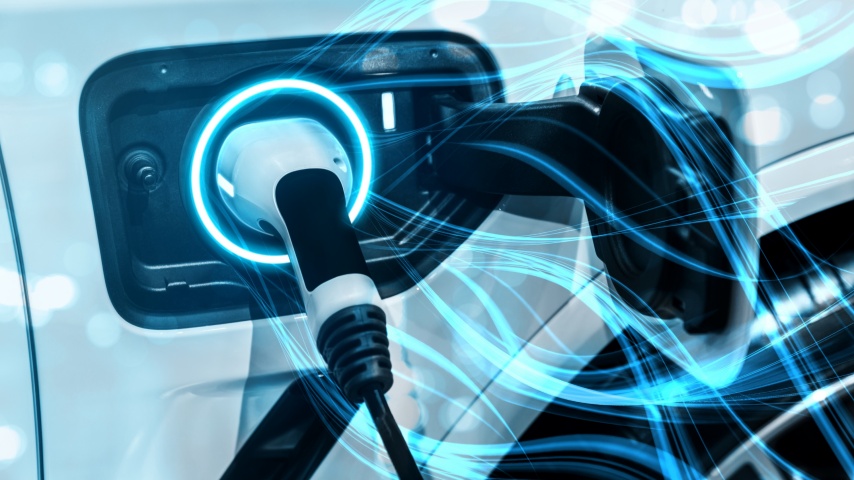In the dynamic landscape of industrial automation, the Asia-Pacific region stands out as a powerhouse, with pressure sensors playing a pivotal role. These sensors, crucial for monitoring and controlling various industrial processes, have seen a significant surge in demand, especially in sectors like automotive and medical devices.
Automotive Sector Driving Growth
The automotive industry, particularly with the rise of electric vehicles (EVs), has been a major catalyst in the growth of the pressure sensor market. Pressure sensors are integral in applications ranging from tire pressure monitoring to managing fuel systems. As per IEA data, by 2030, electric vehicle sales are expected to comprise approximately 65% of all vehicle sales under a net-zero emissions scenario, emphasizing the growing importance of pressure sensors in this sector.
Medical Industry's Increasing Demand
In the medical field, China emerges as a key player. With a burgeoning market for medical devices, driven by government support and demographic shifts, the demand for pressure sensors in medical equipment is rising. These sensors are essential for applications like indoor pressure monitoring and regulating pressure levels during treatments.
Technological Innovations and Challenges
The market isn't without its challenges, however. High costs and technical complexities associated with smaller, more sophisticated sensors pose hurdles. Yet, the industry is responding with innovative solutions, such as MEMS technology, which offers compact and efficient sensor designs.
Market Dominance and Future Prospects
The Asia-Pacific region dominates the global pressure sensor market, thanks to the rapid industrialization in countries like China, Japan, and India. The integration of pressure sensors in automotive, medical, and renewable energy sectors signifies not just current growth but also potential future expansion. As these industries evolve, so will the demand for advanced pressure sensing technologies.

Pressure Sensors in the Automotive Industry:Driving Innovation in Electric Vehicles
The automotive industry, particularly the electric vehicle (EV) sector, is undergoing a remarkable transformation, with pressure sensors at its core. These sensors have become indispensable in modern vehicles, playing a crucial role in various systems and ensuring efficiency, safety, and environmental compliance.
Key Applications in EVs
Tire Pressure Monitoring Systems (TPMS): Essential for vehicle safety and efficiency, TPMS uses pressure sensors to provide real-time tire pressure data, helping to prevent accidents, reduce tire wear, and improve fuel efficiency.
Brake Systems: In electric and hybrid vehicles, pressure sensors contribute to the precise control of brake systems, enhancing safety and performance.
Battery Management: Managing the pressure within battery cells is critical for safety and longevity, especially in larger battery packs used in EVs. Pressure sensors help in monitoring these aspects, ensuring optimal performance.
Market Growth Driven by EVs
The surge in EV sales, driven by global environmental policies and technological advancements, directly impacts the demand for pressure sensors. As the automotive industry shifts towards electric mobility, the role of these sensors becomes increasingly significant. For instance, the development of more compact, battery-less tire pressure sensor modules is a testament to the industry's focus on innovation and efficiency.
Technological Advancements
MEMS Sensors: Micro-Electro-Mechanical Systems (MEMS) technology has revolutionized pressure sensing in the automotive sector. These sensors offer compact size, high accuracy, and the ability to withstand harsh environments, making them ideal for automotive applications.
Energy Harvesting Systems: The integration of MEMS-based energy harvesting systems in tires is an example of how the industry is pushing the boundaries of sensor technology, reducing size and eliminating the need for external power sources.
Challenges and Opportunities While the demand for pressure sensors in EVs presents significant growth opportunities, challenges like high manufacturing costs and the need for continuous technological innovation remain. Overcoming these challenges is essential for the industry to sustain its growth trajectory.
The increasing adoption of electric vehicles, coupled with advancements in pressure sensor technology, is not just reshaping the automotive sector but also setting new standards for efficiency, safety, and environmental responsibility.

The Medical Industry’s Demand for Pressure Sensors:Revolutionizing Healthcare Through Precision and Innovation
In the realm of healthcare, pressure sensors have emerged as a critical component, revolutionizing various medical applications. Their integration into medical devices exemplifies the blend of technology and healthcare, catering to the ever-growing demand for advanced medical care, particularly in the Asia-Pacific region.
Key Applications in Healthcare
Monitoring and Diagnostic Devices: Pressure sensors are vital in devices like blood pressure monitors and ventilators. They provide accurate readings essential for patient monitoring, diagnosis, and treatment.
Therapeutic Equipment: In devices like Continuous Positive Airway Pressure (CPAP) machines, pressure sensors ensure the correct air pressure is delivered to patients, crucial in treating conditions like sleep apnea.
Growth Driven by Technological Advancements and Demographic Shifts
The growth of the medical device market in countries like China is a testament to the expanding role of pressure sensors in healthcare. The National Medical Products Administration of China reports a steady increase in the number of medical device enterprises, highlighting the potential for further integration of pressure sensors in medical technology.
The aging population and the increasing prevalence of chronic diseases have led to a higher demand for advanced medical devices, subsequently driving the need for precise and reliable pressure sensors.
Market Challenges and Opportunities
While the medical industry offers significant opportunities for the application of pressure sensors, challenges such as regulatory compliance, cost optimization, and the need for sensors to function accurately in diverse environments persist.
Overcoming these challenges is crucial for the pressure sensor market to maintain its growth trajectory in the medical sector.
The Future of Pressure Sensors in Healthcare
As the medical industry continues to evolve, pressure sensors will play an increasingly important role. Their ability to provide accurate data and facilitate advanced medical treatments positions them as key components in the future of healthcare technology.
Innovations like miniaturization and enhanced sensor performance will open new avenues for application, further integrating pressure sensors into a wide range of medical devices.
The application of pressure sensors in the medical industry not only underscores their versatility but also highlights their crucial role in enhancing patient care and treatment outcomes. Their integration in medical technology is a significant step towards more efficient, precise, and reliable healthcare.
Market Challenges and Technological Developments in Pressure Sensors:Navigating Through Obstacles Towards Innovation
The pressure sensor market, particularly in the Asia-Pacific region, is at a critical juncture where challenges meet groundbreaking technological advancements. This intersection is not only shaping the current market but also dictating its future trajectory.
Key Challenges
High Manufacturing Costs: One of the primary challenges is the cost associated with producing advanced pressure sensors. This is particularly pertinent in sectors like automotive and healthcare, where the demand for high precision and reliability escalates the production costs.
Miniaturization and Technical Complexities: As industries demand smaller and more efficient sensors, the technical complexity increases. Designing sensors that are compact yet robust enough to withstand diverse and harsh environments is a significant challenge.
Regulatory Compliance: Especially in the medical sector, pressure sensors must adhere to stringent regulatory standards, adding another layer of complexity to their development and production.
Technological Innovations as Solutions
MEMS Technology: Micro-Electro-Mechanical Systems (MEMS) technology has been a game-changer in the pressure sensor market. Offering miniaturization without compromising performance, MEMS sensors are becoming increasingly popular in various applications.
Energy Harvesting and Wireless Technologies: Advancements in energy harvesting techniques have led to the development of self-powered sensors, eliminating the need for external power sources and reducing maintenance.
Smart Sensor Technology: The integration of smart technologies into pressure sensors, enabling features like real-time data analysis and IoT connectivity, is setting new standards in terms of functionality and application scope.
The Road Ahead
The future of the pressure sensor market hinges on its ability to overcome these challenges through innovation. As technology continues to evolve, we can expect to see more sophisticated, efficient, and cost-effective pressure sensors. The continued investment in research and development, along with a focus on emerging needs of various industries, will drive the market forward.
The journey of the pressure sensor market is characterized by its resilience and adaptability, navigating through challenges towards a future rich with technological possibilities.
The Future of Pressure Sensors in Asia-Pacific
Embracing the Wave of Innovation and Expansion
As we look towards the future of the pressure sensor market in the Asia-Pacific region, it's clear that the path is paved with both challenges and immense opportunities. The intersection of technological innovation, industry demands, and regional growth potential paints a promising picture for the market's future.
Key Takeaways
Automotive and Medical Industries as Major Drivers: The growth in electric vehicles and the expanding medical device market, particularly in China, will continue to drive the demand for advanced pressure sensors.
Technological Advancements Fueling Growth: Innovations in MEMS technology, energy harvesting, and smart sensor capabilities will propel the market forward, offering more efficient, cost-effective, and versatile solutions.
Overcoming Challenges: Addressing issues like manufacturing costs, technical complexities, and regulatory compliance will be crucial for market sustainability and growth.
Future Outlook
Diversification and Expansion: The pressure sensor market is expected to diversify into new applications, including renewable energy, aerospace, and consumer electronics, further broadening its scope.
Increased Market Penetration: With continued technological advancements and cost reductions, pressure sensors are likely to see increased penetration in various sectors, reinforcing their essential role in industrial automation and beyond.
Sustainable and Smart Solutions: The focus on sustainability and integration with IoT and AI technologies will define the next generation of pressure sensors, aligning with global trends towards smart, interconnected, and environmentally friendly solutions.
The pressure sensor market in the Asia-Pacific region is at the forefront of technological innovation and industrial growth. As the industry evolves and new challenges arise, the market's adaptability and capacity for innovation will be key to its continued success and expansion. Let's look forward to and witness the development and innovation in the sensor industry together!
Post time: Jan-11-2024

